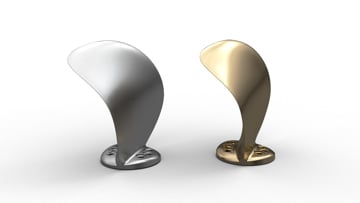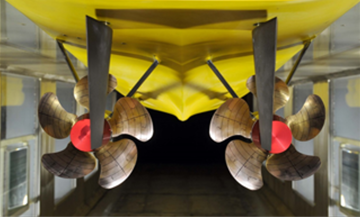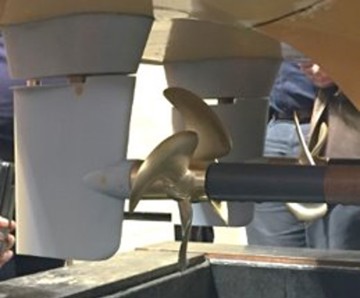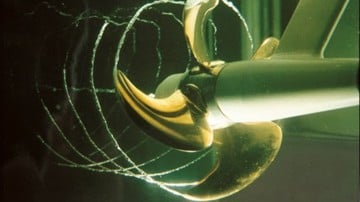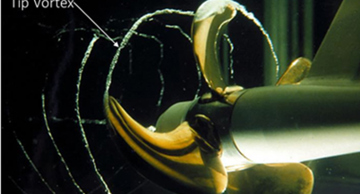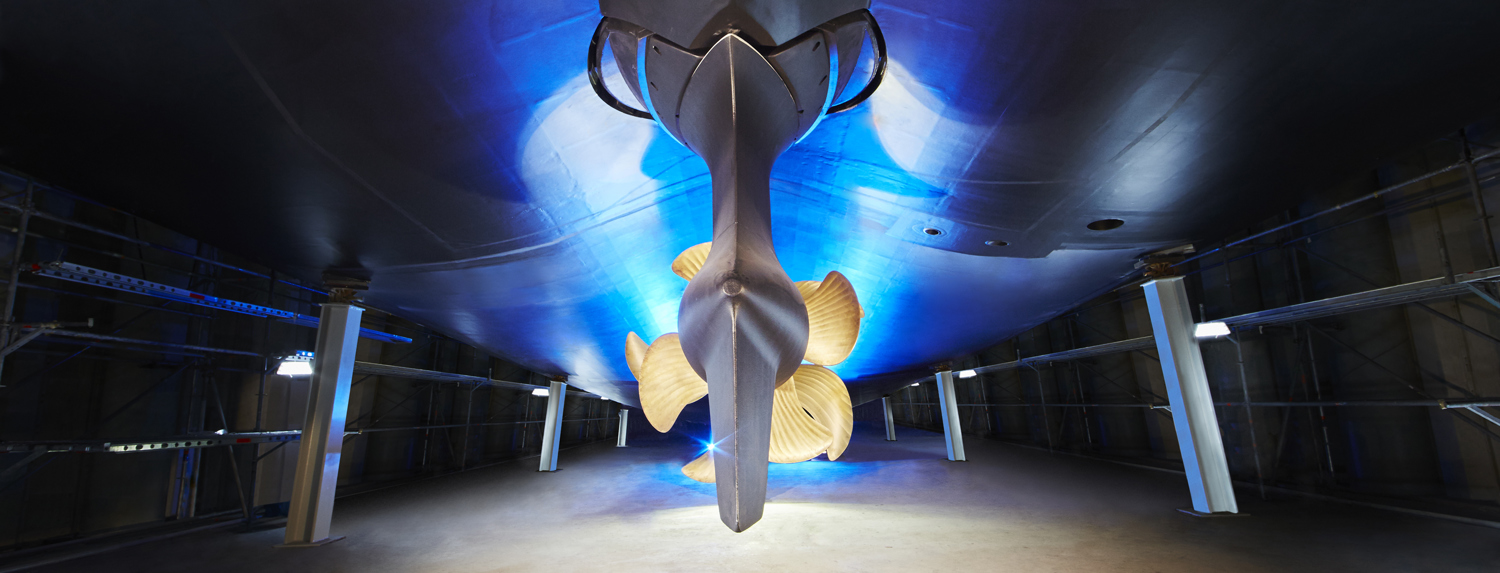
Propeller design & Cavitation
For each vessel, the design team at Kongsberg optimises the propeller blades to achieve the highest possible performance based on needs for high efficiency or low noise levels.
- Starting from the customers’ requirements and expectations; the team collects information about the vessels’ mission, operational profile and machinery system and develops the propeller design to the given conditions. The designs are analysed using the latest simulation techniques in combination with the cavitation testing capabilities of Kongsberg.
- The propeller design capability at Kongsberg is unique not only for its long experience from 80-years of hydrodynamics research, but also for the variation between vessel types and segments. Designing propellers for fishing or cargo vessels is a different story from design propellers for the worlds’ most advanced Naval, Cruise and RoPax vessels.
- In the Naval segment, large programs with extensive model testing and analysis in combination with strict requirements for efficiency, cavitation erosion and cavitation inception speed (CIS), drives the development of new design philosophies and analyse methods. The experience and knowledge gained from these naval programs are applied for commercial projects where similar requirements can be seen for e.g. research vessels or mega yachts. This makes propeller designs from the Kongsberg team World Class independently of vessel segment.
- The team also have extensive expertise in the design of appendages to achieve good inflow to the propeller (wake field) which is an enabler for high propeller performance. By involving the Kongsberg team early in your design process, you will maximize the benefit from 80-year of hydrodynamic research.
OUR SERVICES

GET IN TOUCH!
Hydrodynamic Research Centre Varnumsleden 7 S-681 93 Kristinehamn Sweden
